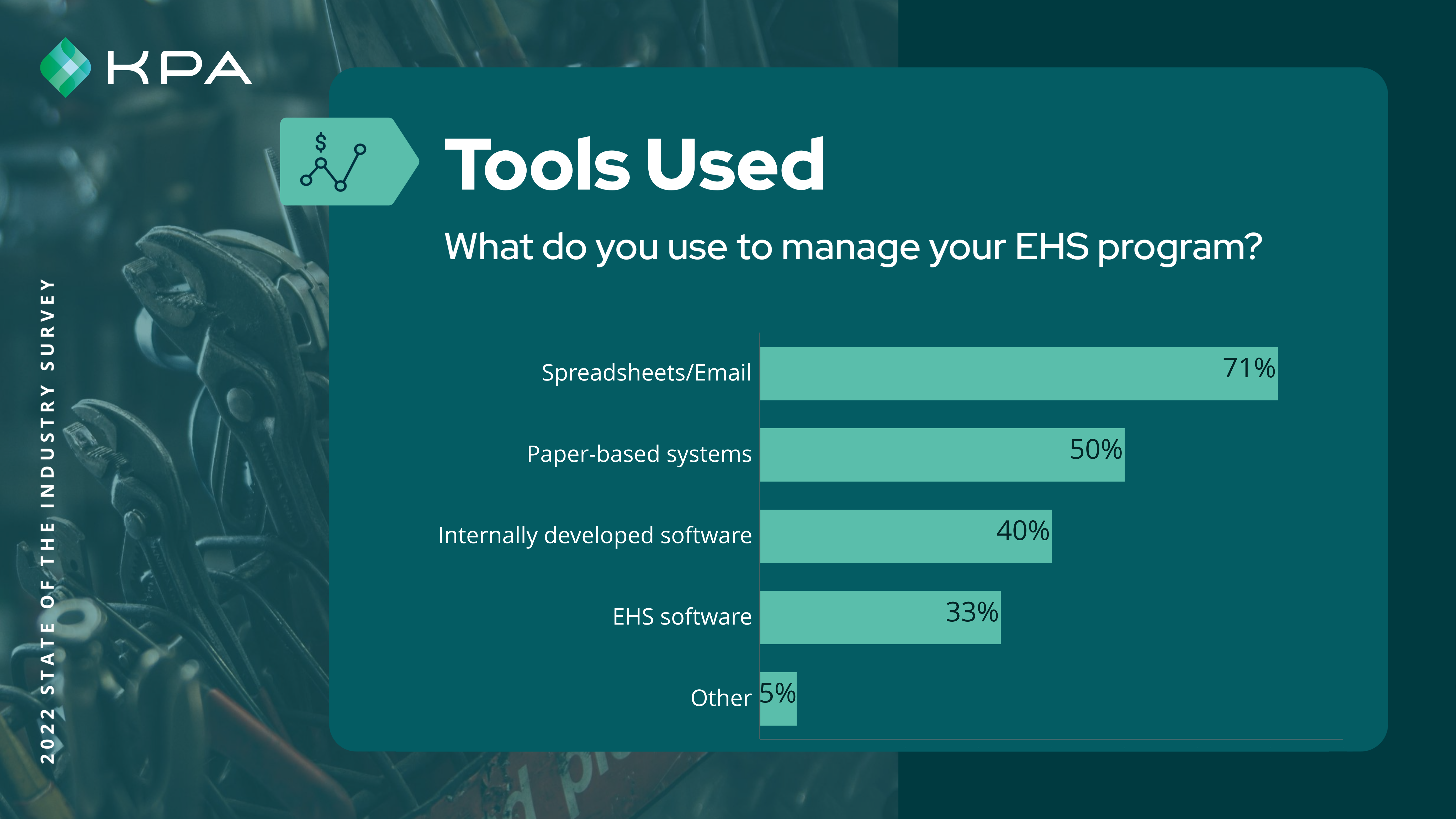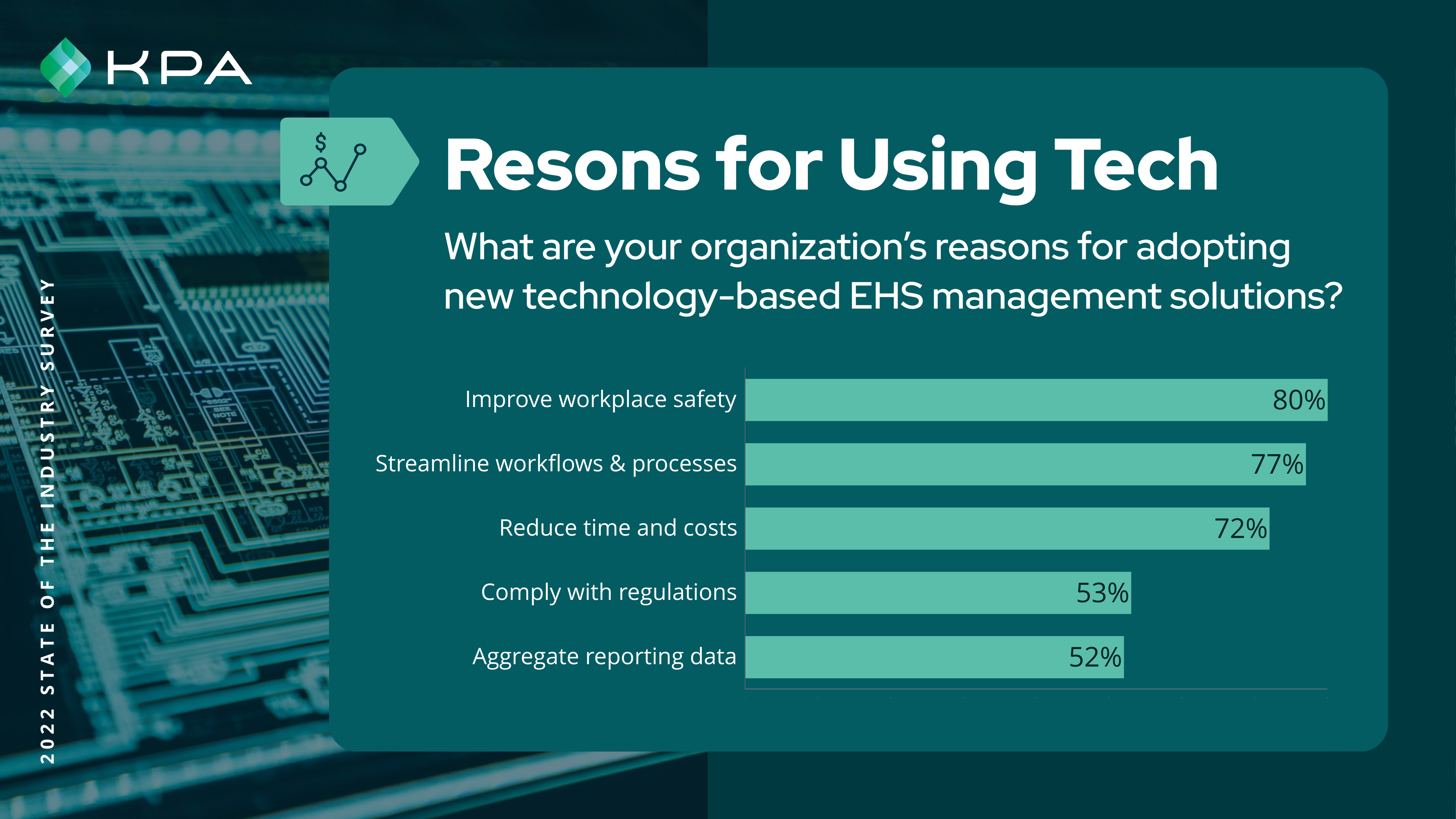We asked respondents what types of technology they use to manage their EHS programs, from paper to EHS software. Here’s what they had to say.
These are the latest study findings from this year’s State of the Market: EHS Program report. It’s our third year partnering with EHS Today on the study, surveying trends in Environment, Health, and Safety programs.
As you can see in the figure below, companies typically use multiple technologies to manage their EHS program.
This is the fourth in a series of blog posts based on the study, in which we present the data and our conclusions in a quick-read format.
You can catch up on all of the articles in the:
State of the Industry
Research Hub >>

Across company sizes, spreadsheets and email still rank as the top EHS program management tool.
Companies are more likely to use EHS software or internally developed software (73% in total) than paper-based systems (50%).
Differences by Company Size
Larger companies are more likely (60%) to use EHS software than mid-sized companies (37%) and smaller companies (28%).
Why Companies Adopt New Technology
We asked respondents why they adopt new technology-based EHS management solutions (multiple responses possible). The top reasons were:
- To improve workplace safety (80%);
- To streamline safety workflows and processes (77%); and
- To reduce time and costs (72%).

Download the full study to learn how high-performance EHS programs elevate safety as an organization-wide priority.
Tying it all together:
EHS Software Supports both the Participation and the Systems Sides of Safety Programs
While reviewing the data, KPA’s Product Director, Jade Brainard stated, “In a time like this, it is crucially important to ensure that you have the right tools and resources in place so that safety doesn’t become a burden. Have tools that are that are easy, that are quick, that are practical for the environment that the workers are in. So if I’m out on a job site not having to go to a laptop or pull out a piece of paper that have something that is that is quick and easy and practical for for my my day to day process, that is crucial to increase the likelihood of getting employee engagement and adoption and leadership involvement in the overall safety program.”
So, if the results are clear, how do you choose the right EHS software for your business?
Ultimately, the best EHS software is employee-centric. It generates better safety outcomes because it’s easy to use, and people have an incentive to use it. In other words, a system needs to be built for your workforce. If it’s too complicated, unwieldy, or unintuitive—if it doesn’t align with their existing workflows—they won’t use it.
To determine if a solution is the right fit for your organization, ask the following questions:
Are self-guided forms available?
EHS reporting should take minimal time and effort on the employee’s part.
Can every user access forms and an information library?
If the system creates silos, it’s hardly better than a spreadsheets-and-binders approach.
Is the solution mobile-ready?
Business today happens on phones. Any employee should be able to quickly pull out their mobile device and enter information at a moment’s notice.
Are data dashboards included?
Any software you purchase should have strong reporting and dashboard capabilities. Again, ease of use is critical. Keep in mind that EHS might not be a user’s only job. When someone’s busy, they should be able to log in and find the exact data information they need, when they need it.
Want help making a smart decision? Grab a copy of the EHS Software Buyer’s Guide.
KPA EHS – The Backbone of Your Safety Program
KPA EHS helps you develop a comprehensive EHS program that harnesses technology, best practices, and the concerted efforts of your workforce to maintain a safe and productive workplace.
Introducing an EHS software platform tailored to the needs of your business. Manage your safety program in an all-in-one system designed to engage your employees, instill a culture of safety, and enable regulatory compliance.